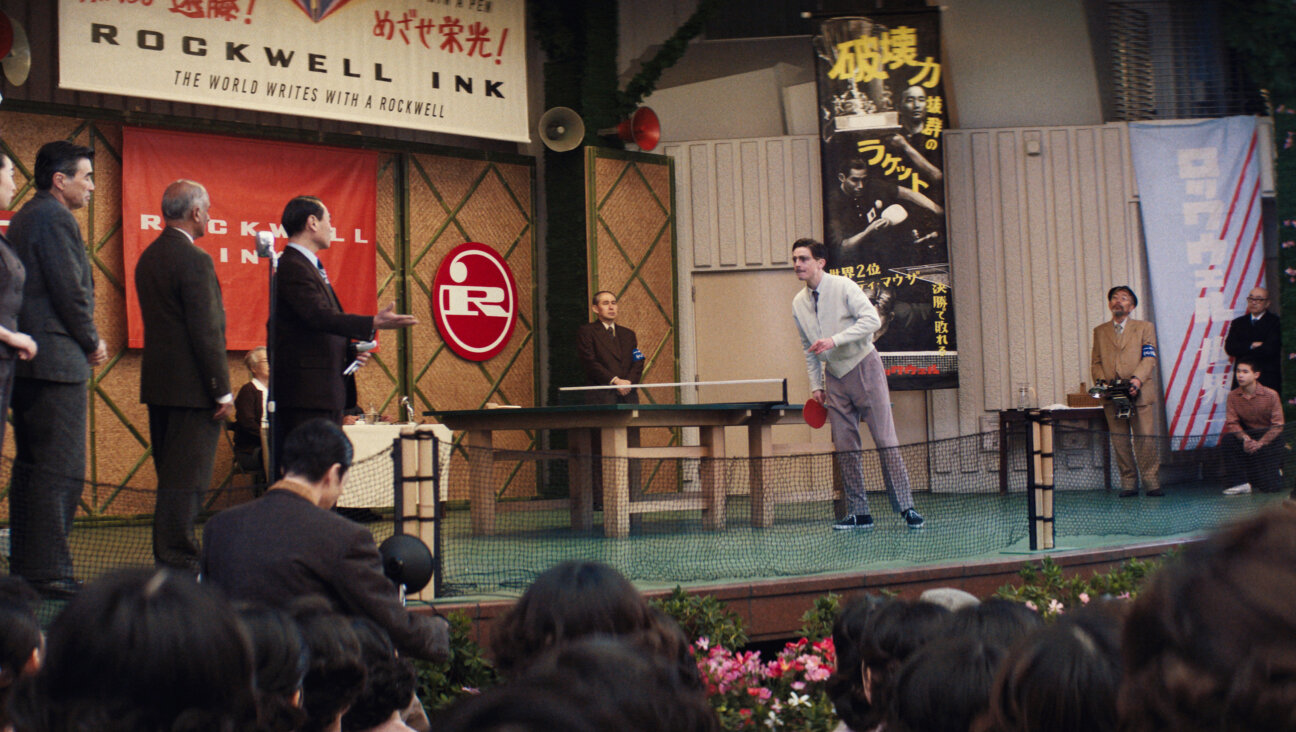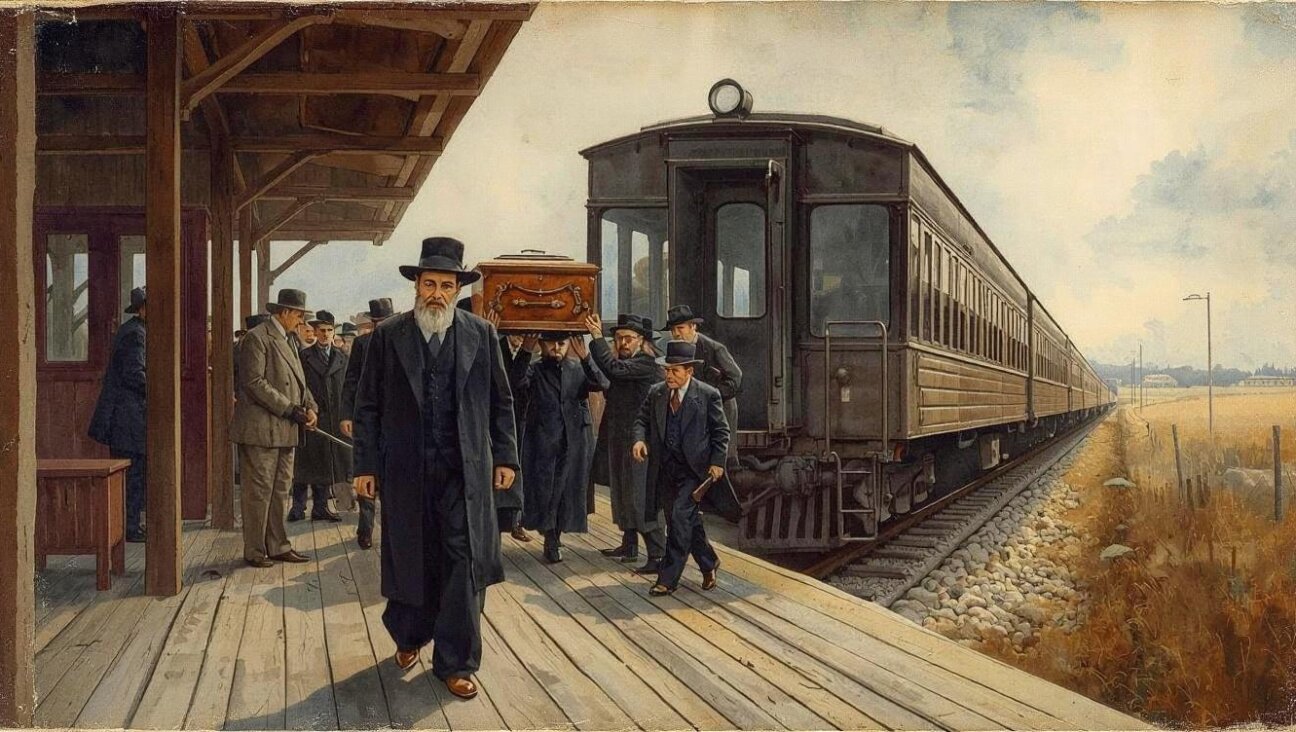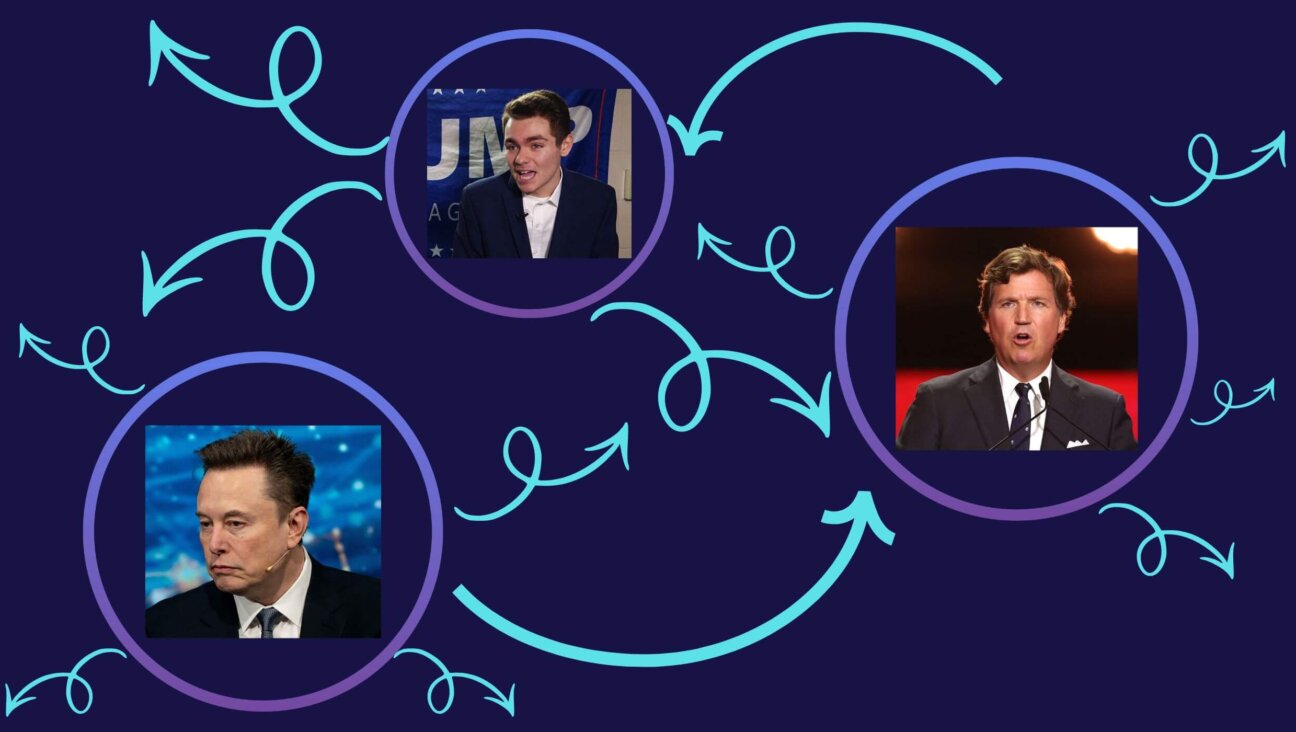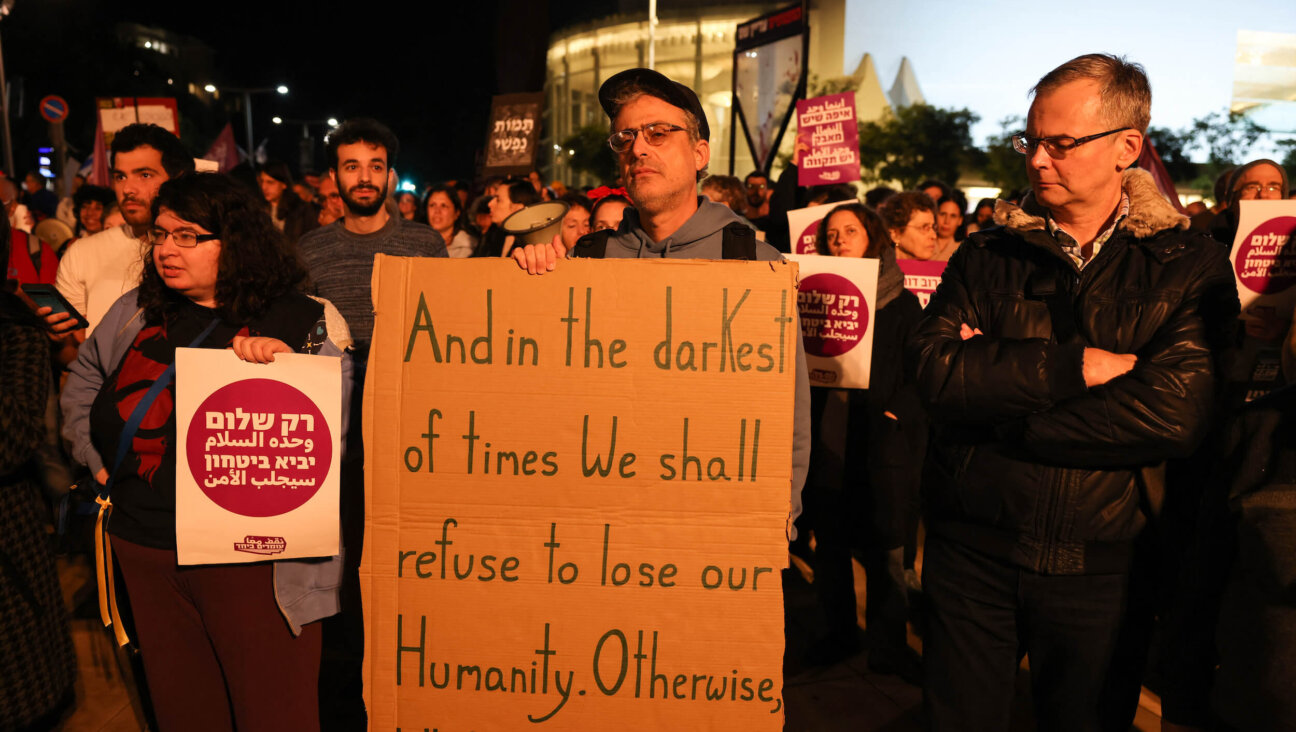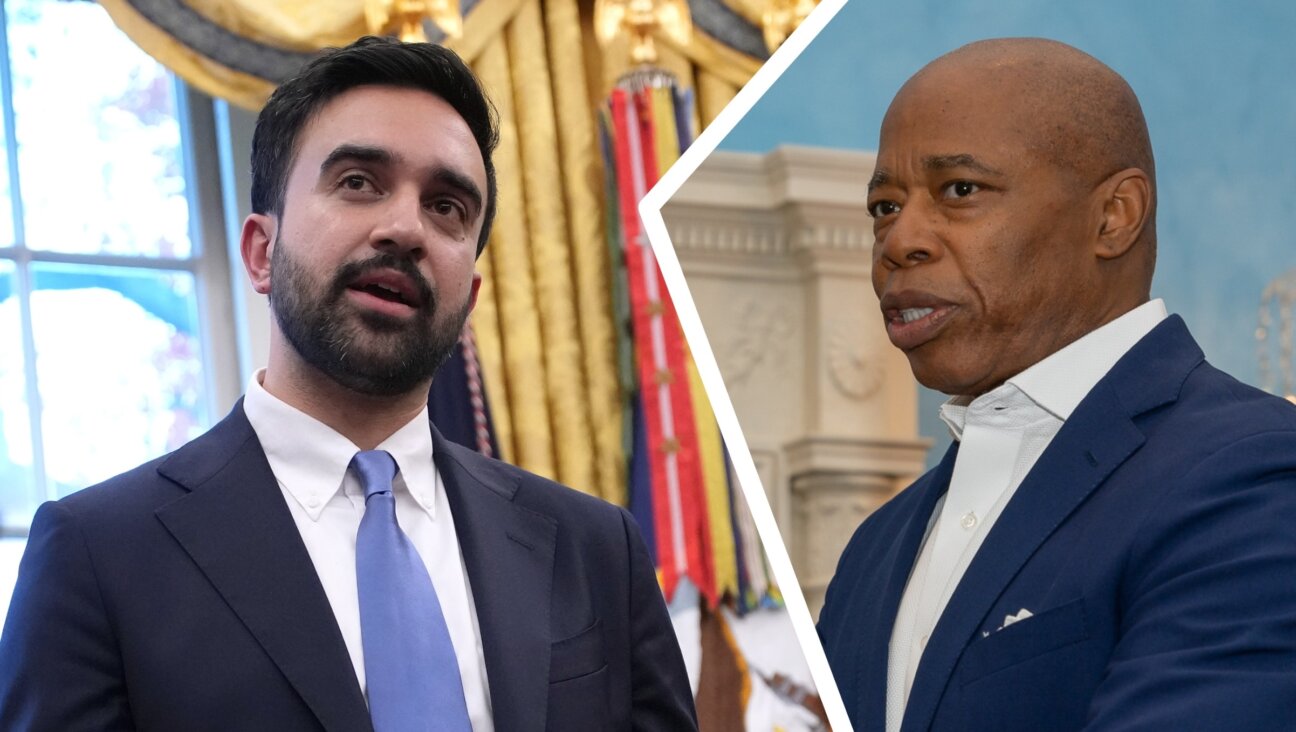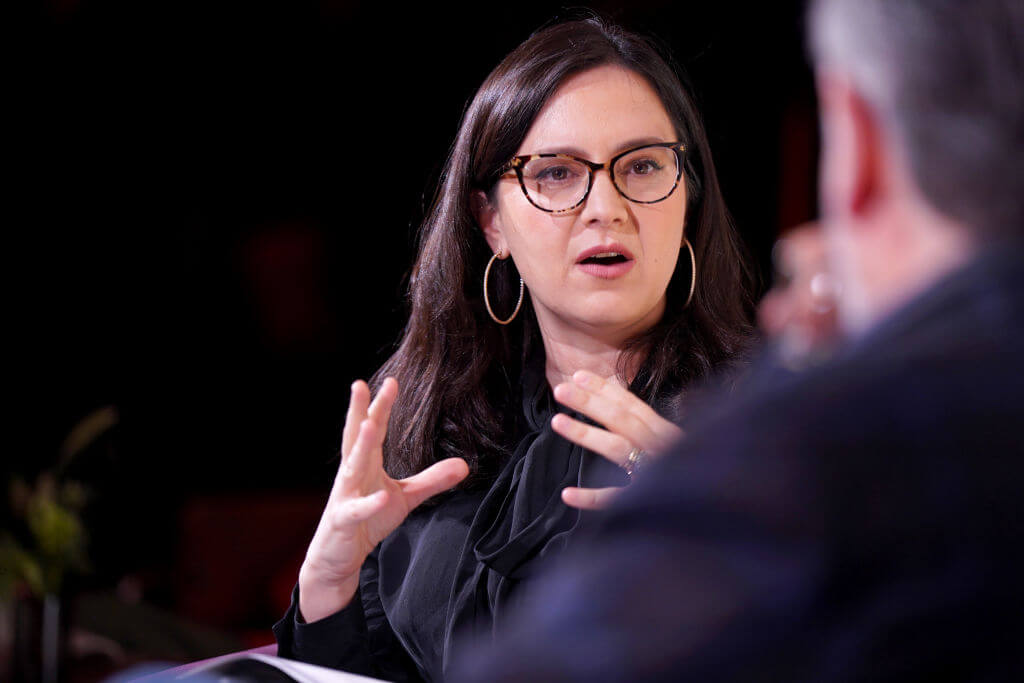A shocking true story of Mexico’s Jewish community comes to Netflix
In ‘No One Saw Us Leave,’ the story of a kidnapping rests on the internal dynamics of a tight-knit Jewish community
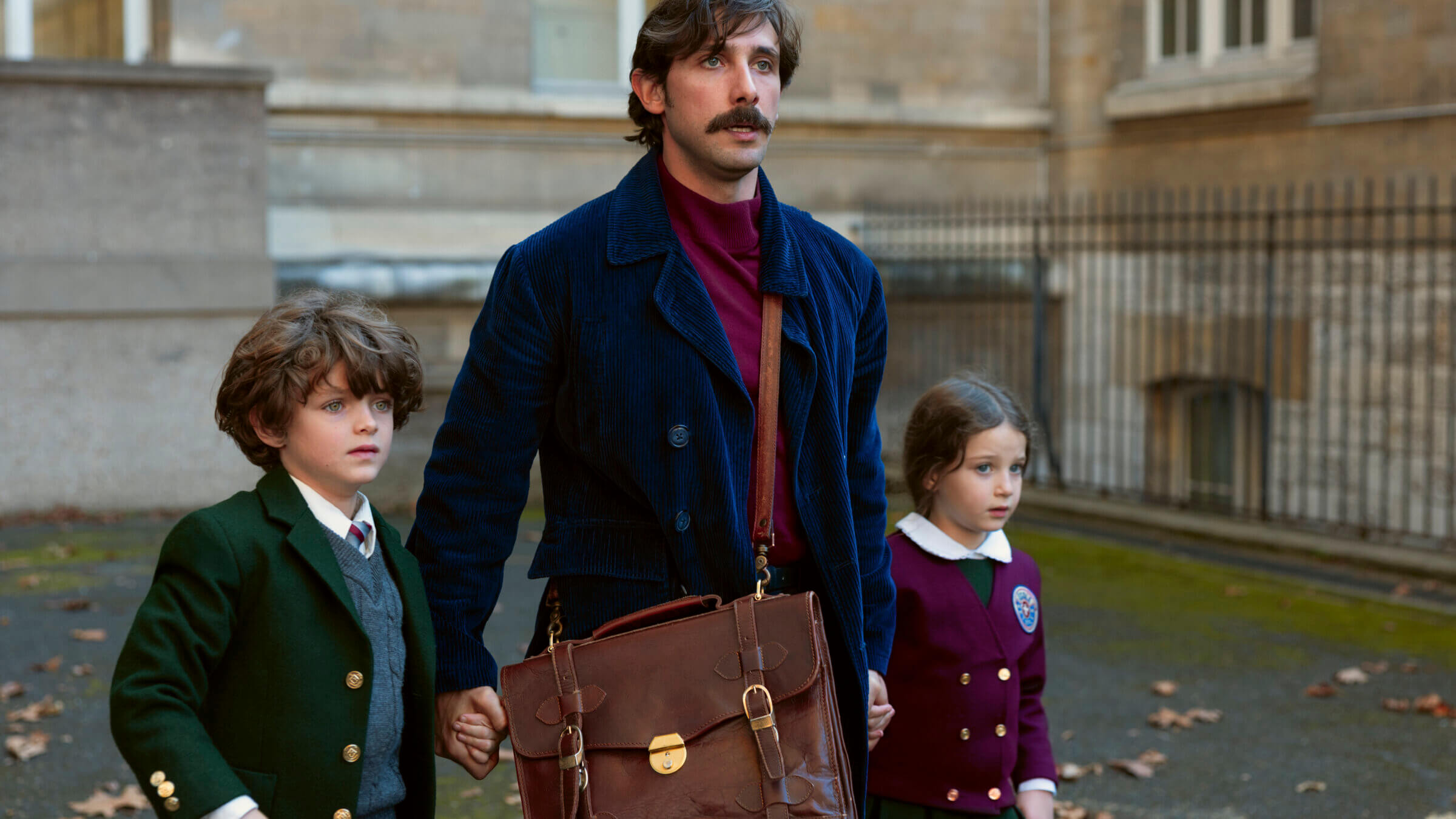
Leo and his children, Isaac and Tamara, in Paris, the first stop on their international flight. Courtesy of Netflix
Growing up in Paris, an Italian castle, South Africa at the dawn of its civil rights movement, and a kibbutz in the then-new state of Israel sounds like it would be enriching, the project of idealistic parents who wanted their children to see the world and witness history. But that wasn’t exactly how it unfolded for Tamara Trottner, née Salzberg, and her brother Isaac.
Instead, they lived in these locations for three years because they were on the run with their father, Leo (Emiliano Zurita), who was being hunted by Interpol for kidnapping his own children. He had taken them to retaliate against his wife, Valeria (Tessa Ia), after she had an affair with his brother-in-law.
Trottner wrote a memoir about the experience and it has been adapted into a gripping and sumptuously filmed Spanish-language miniseries, No One Saw Us Leave, which recently arrived on Netflix.
In the opening episode, we see a stylish wedding between a young Valeria and Leo, both children of leaders of Mexico City’s small Ashkenazi Jewish community. As she prepares to walk down the aisle, Valeria’s mother tells her she is destined to have “a sheyne lebn” — a beautiful life, in Yiddish — and the crowd dances to “Hava Negila.”
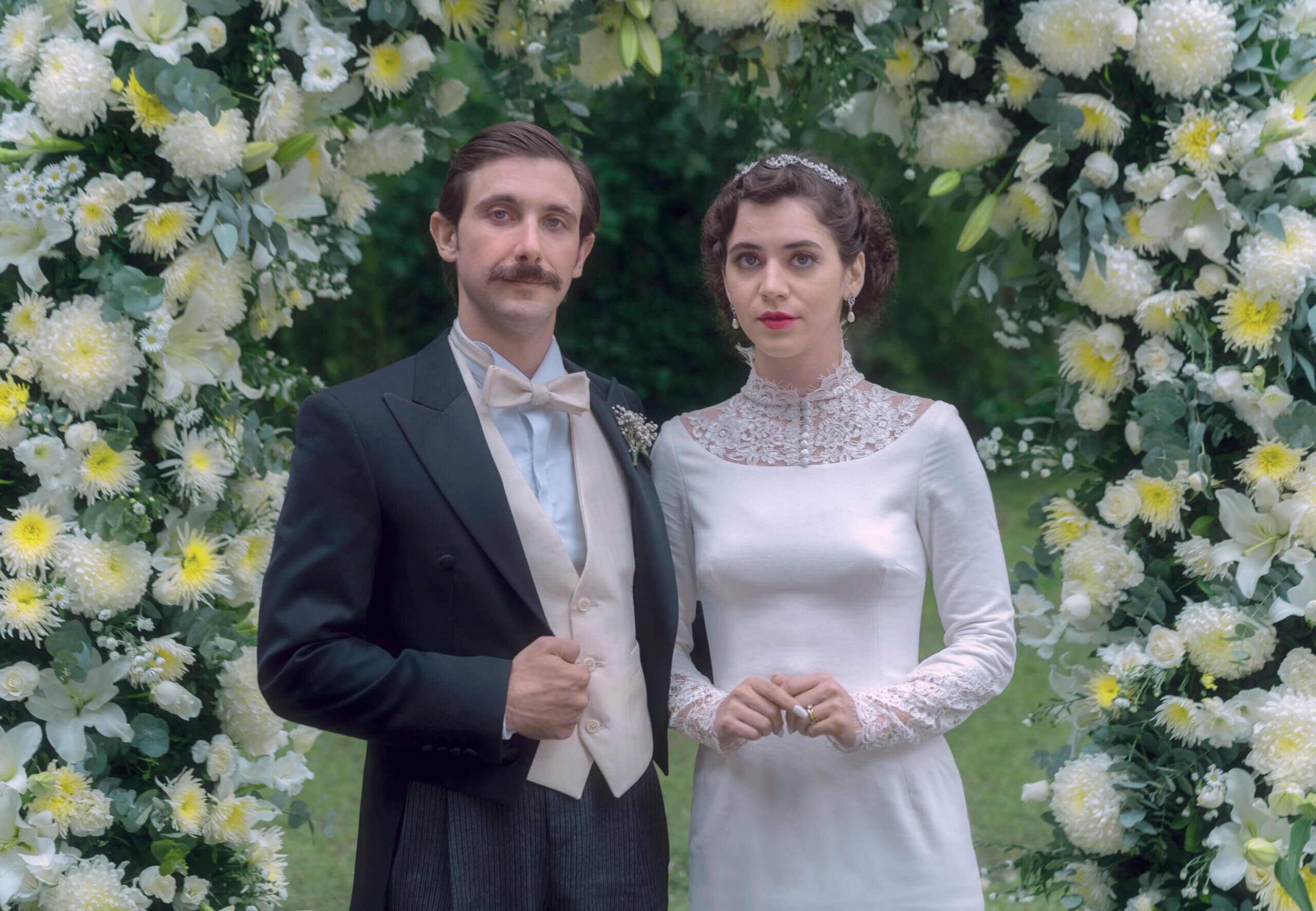
But even at their wedding, there’s little warmth between the two; their marriage is closer to a merger between their two families, and while they don’t hate each other, there’s little mutual understanding — Leo believes Valeria should be the woman of the house, but she is tapped into the burgeoning feminism of the 1960s and wants to get a master’s degree.
We switch between flashbacks of the pair’s marriage — we see the beginnings of Valeria’s affair, as she dances with her brother-in-law Carlos — and Leo’s international run with his children, Tamara and Leo. Though the children, who begin the voyage aged 5 and 7, constantly ask about their mother, he alternates between telling them that she is coming to join them soon and that she did “something bad” and doesn’t want to see them anymore. In fact, Valeria is searching desperately, and has hired an ex-Mossad agent (Ari Brickman) to aid her in the international hunt.
It’s an emotional and suspenseful story as Leo routinely manages to evade the international police. But the subtle story driving all of the drama is that of the tight-knit Jewish community in Mexico City — even today, only 3% of Mexican Jews marry outside the community — and the interplay of respectability and influence within it.
As part of his retribution against Valeria — and to protect his own reputation as he flees Mexico — Leo spreads a story that his wife was unstable and an unfit mother, even alleging that she had been committed to a psychiatric facility. For at least the first episode of the show, the audience, too, is unsure why Leo has really taken the children, and the story about Valeria seems plausible; we’re not sure who to stand with.
The rest of the Jewish community, too, is unsure; at first, people ice out Valeria and her family as they try to gain information about the children’s whereabouts. The push and pull between two powerful families leaves the community confused and caught in the middle. And after Valeria launches a publicity campaign to clear her name and solicit clues, many of the other leaders worry about the damage to the community’s public image in Mexico, alluding to the European antisemitism they fled from. Leo’s father, meanwhile, is a domineering figure who asserts that his daughter-in-law’s affair is just as bad a blow to the community’s reputation as the kidnapping.
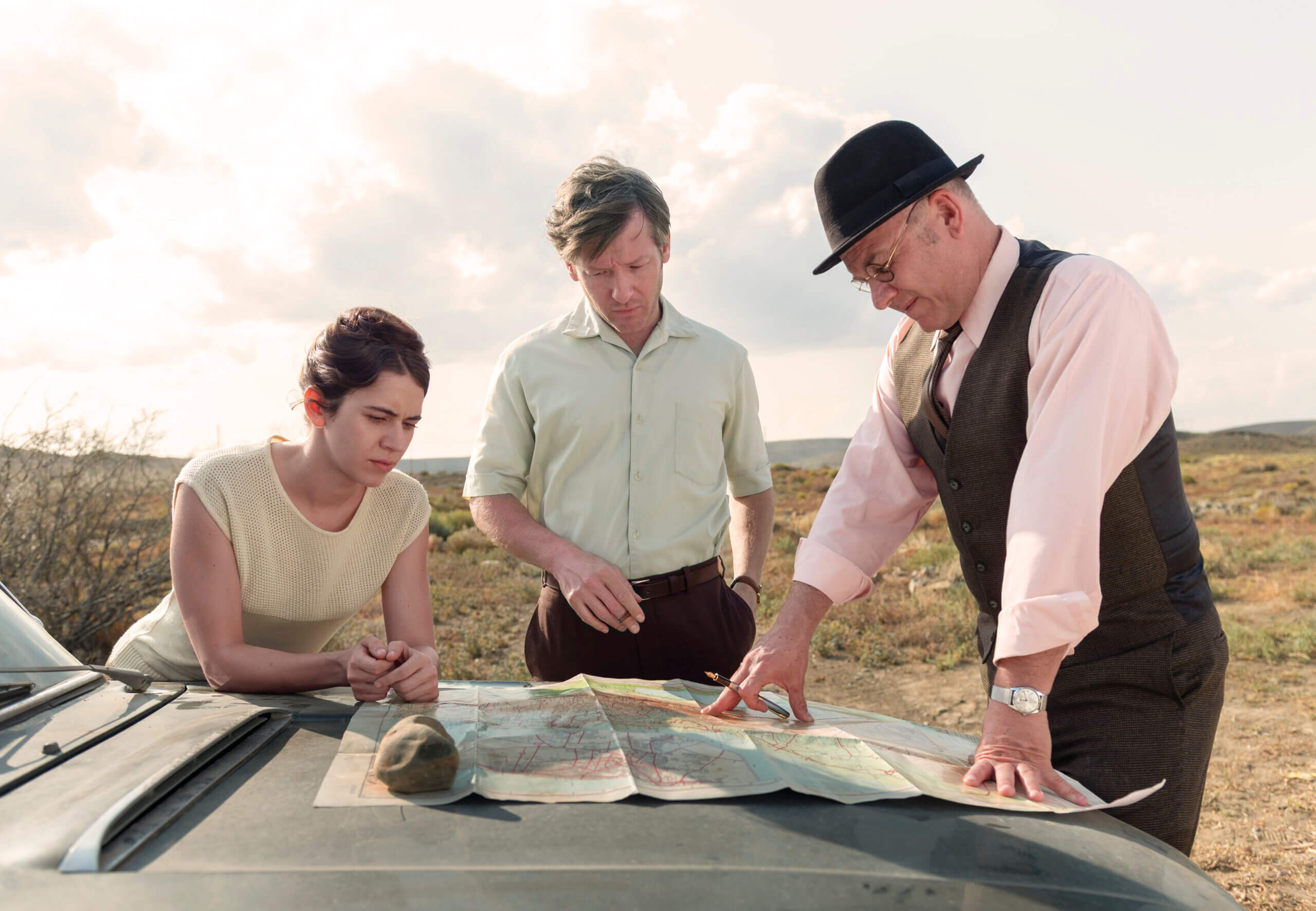
The confusion is helped by the fact that Leo is not presented as a villain. He’s a well-developed character, with his own issues with his marriage and with his overbearing father. An ardent socialist, we see him join an activist group against apartheid while hiding in South Africa, and later, when he flees to Israel, he joins the kibbutz he’d dreamed of, and is embraced for his politics and architectural talents.
(Leo’s time in Israel also gives the audience a window into the kibbutzim of the 1960s, which were still practicing an almost militant form of socialism they have since left behind — children were raised communally and told to call their parents by their first names.)
Eventually, Valeria finds her husband and the children, after checking nearly every kibbutz in the country — we see Kfar Aza, one of the towns destroyed on Oct. 7, get crossed off a list — and Israeli courts order Leo and the children back to Mexico. An end note summarizes the rest of the history: Valeria and Carlos, her affair partner, won and raised the children together, who didn’t see Leo again for 20 years.
Of course, much of the show’s drama is in the obvious: Leo’s flight, the children’s growing realization that their father has been lying to them, Valeria’s desperation. But the quiet conflict between families, the power of reputation — both within the small Jewish community and between that community and the broader world — undergird every moment of the story. The power of Jewish community is, ultimately, inescapable.


